Well, shit. Hail for the second time in a week. The first time shredded my lettuce bed pretty badly, as you can see below.
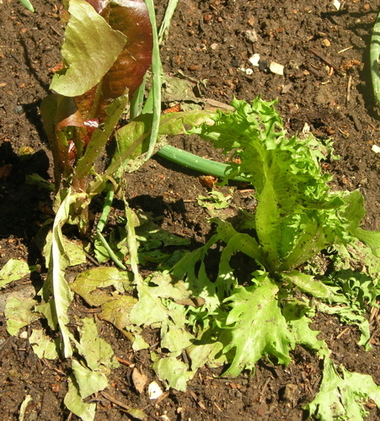 This one about ruined the young lettuce I’d planted for family across the alley who let me use gardening space in their yard; those greenish smears used to be lettuce plants.
This one about ruined the young lettuce I’d planted for family across the alley who let me use gardening space in their yard; those greenish smears used to be lettuce plants. Things look almost as bad in the lettuce bed next door, where five college guys also let me use space. (This is my plan for world hegemony: yard by yard, I advance.)
Things look almost as bad in the lettuce bed next door, where five college guys also let me use space. (This is my plan for world hegemony: yard by yard, I advance.)
I did wrap a row-cover over one tomato and young squash in a barrel, and they fared better under the weight than others did with the slash and freeze of the hail itself. This young crookneck squash took a real beating, though, 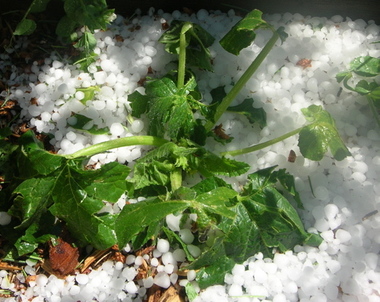 as did the potatoes.
as did the potatoes.
The whole thing was over in five or ten minutes. The temperature plumetted, from somewhere in the high eighties or above (it’s been in the mid-nineties recently) to the sixties or lower, then swung abuptly back up as the cloud passed away and the sun returned. The neighbor’s picnic table, heated in the sun, then doused and cooled, and warmed again, created its own little cloud:
When it was over, we had flooding in the cellar and a leak in the dining room. That was two hours ago.
Oh god, it’s starting again. It’s almost six-thirty, darker than it usually gets till nearly ten, and it sounds as if the house is under seige. What happened to good old-fashioned thunderstorms with RAIN? Some of these hailstones are in clusters; some are an inch in diameter.
The tomato I saved this afternoon has been flattened; the delphinium in the circle garden, just about to bloom, have disappeared into the earth. Leaves from the golden current just outside the window are plastered on the screen, and the branches, lush even after the last onslaught, hang bare and tattered.
Eh–I never really wanted to garden, anyway.
I keep remembering the summer in Laura Ingalls Wilder’s last book, The First Four Years, when her husband Almonzo decided to wait one more day before harvesting the oats. A hail storm came through that afternoon, ruining the crop. There are probably people only a couple of miles away from me for whom this is not an inconvenience, but a tragedy. I am one of the lucky ones.
Okay, I just went out to assess the damage, and it’s almost total. Here’s the tomato I managed to save this afternoon: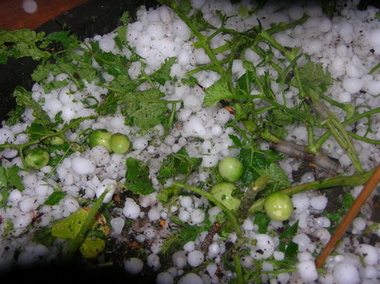
Here’s another, much bigger one: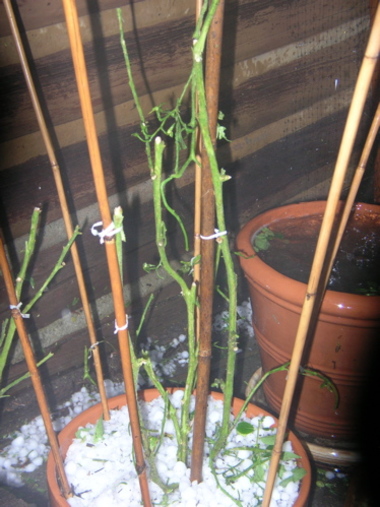
And here is the main garden plot: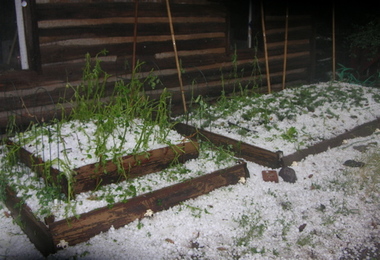
The smaller box in front is the one that held potatoes this afternoon. Also peas. As for the back plot–wow. The peas were so lush, the beans behind them coming along nicely–all gone.
My husband calculates that if there was a centimeter of hail, (it’s drifted inches deep in places) then actually a ton of ice fell out of the sky onto our lot. Is this what the hand of God feels like?
Tell me your disaster stories, so I don’t have time to feel sorry for myself.

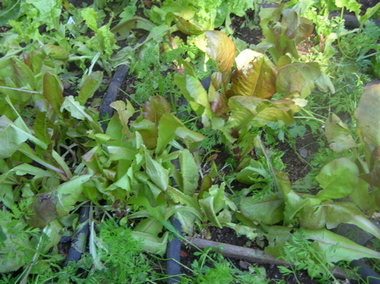
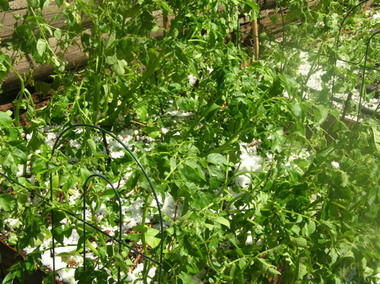
 Subscribe to RSS feed
Subscribe to RSS feed


